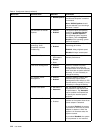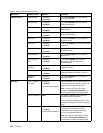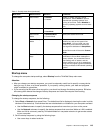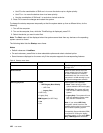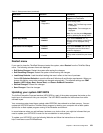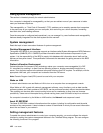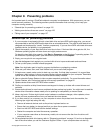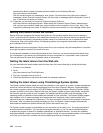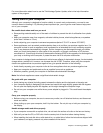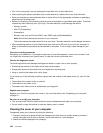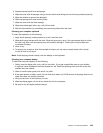
Using system management
This section is intended primarily for network administrators.
Your computer is designed for manageability, so that you can redirect more of your resources to better
meet your business objectives.
This manageability, or “Total Cost of Ownership” (TCO), enables you to remotely operate client computers
in the same way as you operate your own computer, such as turning on a client computer, formatting
hard disk drive, and installing software.
Once the computer is congured and operational, you can manage it by use of software and manageability
features already integrated into the client system and the network.
System management
Read this topic to learn more about features of system management:
Desktop Management Interface
The system UEFI BIOS of your computer supports an interface called System Management BIOS Reference
Specication (SMBIOS) V2.6.1 SMBIOS provides information about the hardware components of your
system. It is the responsibility of the BIOS to supply this database with information about itself and the
devices on the system board. This specication documents the standards for getting access to this BIOS
information.
Preboot eXecution Environment
Preboot eXecution Environment (PXE) technology makes your computer more manageable (it is PXE
2.1-compliant) by enabling it to boot (load an operating system or another executable image) from a
server. Your computer supports the personal computer functions that PXE requires. For example, with the
appropriate LAN card, your computer can be booted from the PXE server.
Note: Remote Program Load (RPL) cannot be used with your computer.
Wake on LAN
A network administrator can use Wake on LAN to turn on a computer from a management console.
When Wake on LAN is used with network management software, many functions, such as data transfer,
software updates, and Flash updates of UEFI BIOS, can be performed remotely without remote attendance.
This updating can be done after normal working hours and on weekends, to save time and increase
productivity. Users are not interrupted during normal working hours, and LAN trafc is kept to a minimum.
If a computer is turned on by the Wake on LAN function, the Network boot sequence is used.
Asset ID EEPROM
The Asset ID EEPROM contains information about the system, including its conguration and the serial
numbers of key components. It also includes a number of blank elds in which you can record information
about the end users in your network.
Setting management features
To enable the network administrator to control your computer remotely, you must congure the network
interface by setting the system-management features in the ThinkPad Setup program. You can congure
the following functions in the program:
122 User Guide



